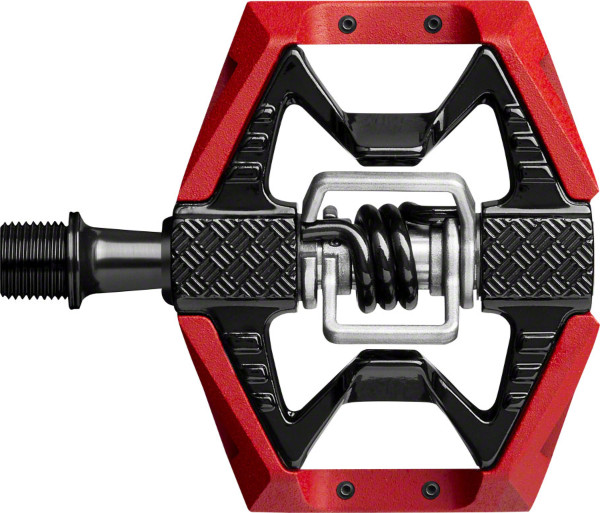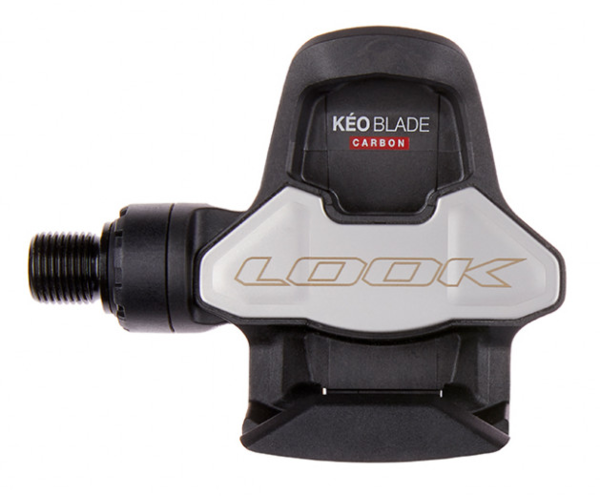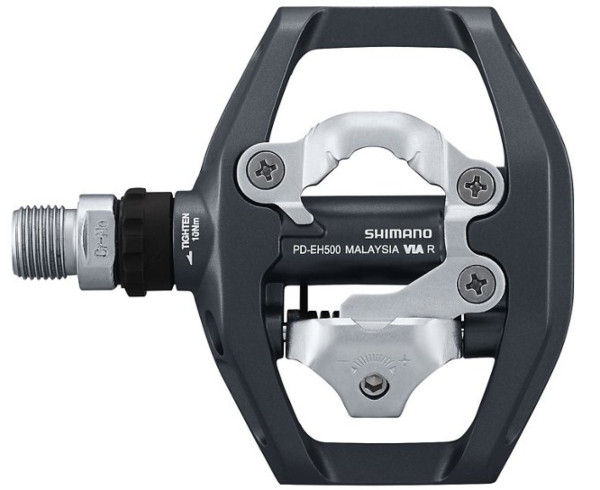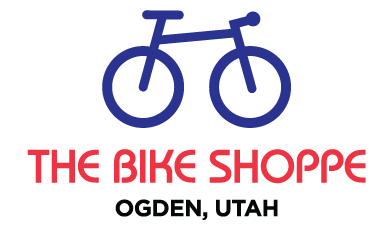
How to Choose Bike Pedals - The Complete Guide
In this guide we’ll cover all the important factors you need to consider when shopping for bike pedals. We’ve broken down the information into a few simple steps that make it easy to figure out the right style.
How do I choose a bike pedal?
- Decide if you want to run clipless pedals, flats, or a hybrid style
- Pick a pedal that matches the type of riding you’ll be doing
- Choose a cycling shoe that works with the pedals you want to run
With these steps in mind, read on to explore the guide or head right to the catalog and shop all bike pedals.
1. Clipless, flat, or hybrid pedals
This is where most people get hung up. What’s better, clipless or flat pedals? In order to decide which style of pedal is right for you, it’s important to understand the differences between the two main types: clipless and flats. Let’s take a look.
What’s the difference between clipless and flat pedals?
First things first: clipless and clip-in pedals are the same thing. The term “clipless” is confusing because they do in fact require the cycling shoe to be attached to the pedal. “Clipless” refers to the modern cleat-style pedals that were a departure from the older toe clip style. Plus, the term “clipping in'' is still used to describe the act of locking the cleat into the pedal.
Strange terminology aside, just remember that with clipless pedals, you do actually clip in. With flats, there is no connection to the pedal, just put your foot down and push. Now let’s take a look at the different kinds of pedals and their benefits so you can choose which style is best for you.
What are the benefits of clipless pedals?

Pros of clipless pedals:
- More efficient pedal stroke for easier climbing
- Better power transfer for more speed
- No slipping off the pedal in wet or rough conditions
Cons of clipless pedals:
- Usually more expensive than flats
- They can take some getting used to
Clipless pedals require you to lock your shoe into the pedal, and while it might sound a little intimidating if you’ve never tried it, there are some serious benefits to consider.
With your shoe clipped in, you’ll be able to take advantage of the full pedal stroke. Instead of only being able to push on the downstroke, you’ll also be able to pull up on the upstroke to increase your efficiency and power transfer. This allows you to increase your speed and make tough climbs easier, and those two benefits alone are enough for most road cyclists to make the switch.
Clipless pedals aren’t just for road riding, though. Many mountain bikers swear by clipless pedals, as well. Besides the climbing advantage, clipless pedals prevent your foot from slipping in wet weather or bouncing out of position on rough terrain. If you’ve ever tried to blast through a rock garden on flat pedals, you know that it’s not always easy to keep your feet planted. By always having your feet in the right position, you’ll be better prepared for the really tough sections of trail.
While there are plenty of benefits of clipping in, not all riders prefer clipless pedals. They can be a bit pricey, but so can a high performance flat pedal. The main reason riders avoid clipping in is they are worried about falling over. Clipless pedals do take some getting used to, but with practice clipping in and out will become an easy, natural movement. Even in the event of a crash, clipless pedals disengage easily so you’re unlikely to be stuck to your bike.
Clipless Pedal Features
Float: Pedal float measures the degree of sideways rotational movement allowed by the pedal and cleat. Adequate float gives that bit of wiggle room so your foot can move naturally and adjust slightly while pedaling. Zero float means your foot is locked into a single position but too much float means you may have to over-rotate your foot to unclip.
Multiple-release pedals: Single-release clipless pedals, such as SPDs, require riders to twist their heel outward to unclip. Multiple-release pedals, however, let riders release themselves by pulling their heel upwards with some force. These alternative pedals can be a good option if you’re just starting to ride clipless. With the upward release point, though, you could accidently unclip while pulling hard on the pedals.
Mud clearance: This factor is most important for mountain, gravel, and cyclocross riding. Some off-road pedals are designed to be able to shed mud and debris due to larger gaps between parts. For example, Time and Crankbrothers pedals are well regarded when riding in muddy conditions.
Spring tension: The retention system in clipless pedals can be adjusted with a small hex key, making it harder or easier to clip out. Beginner riders should set a lower spring tension to facilitate getting in and out of the pedals. Racers typically tighten the spring to prevent any accidental unclipping when putting the power down.
Weight: Clipless mountain bike pedals generally weigh more than clipless road pedals. If you’re looking to shave grams off your setup, lightweight pedals can definitely make a difference but you can expect to pay a bit of a premium.
What are the benefits of flat pedals?

Pros of flat pedals:
- Typically more affordable
- You can ride in any shoe
- Good for aggressive trail riders who want freer movement on berms and jumps
Cons of flat pedals:
- Your foot can slip or bounce off the pedal
- Not as efficient as clipless
Not every rider prefers clipless pedals. Flats, or platform pedals, can be a great choice for mountain bikers, commuters, and tourers.
For starters, cheaper flat pedals are almost always more affordable than cheaper clipless pedals. Secondly, if you’re a casual rider you’ll likely appreciate the ability to hop off your bike and walk comfortably at any moment. With flats you can wear any shoe, so they’re perfect for recreational riders or commuters who only want to bring one pair of shoes with them.
Aggressive mountain bikers and casual trail riders can both benefit from platform pedals. Beginner mountain bikers may appreciate being able to put their feet down quickly on rough sections, and aggressive riders use that freer movement to get a little crazy trails with hairpin turns and jumps, knowing that they can easily get away from the bike if things go sideways.
There is a trade off, however, and people who ride flats will miss out on the extra efficiency and sure-footedness of clipless pedals.
Flat Pedal Features
Flat pedal material: Platform pedals are made from either metal or composite materials such as nylon or plastic. Metal pedals are more durable and can better withstand impacts with rocks or hard pedal strikes while mountain biking. They are also stiffer than composite pedals which still work great and can cost significantly less.
Flat pedal size: The large flat surface area of a platform pedal allows for sure footing over rough terrain, but it’s important to find the right size. Too small and you could slip off the pedal. Too large and the pedals can be cumbersome with extra pins that don’t fit under your shoe. Many platform pedals are available in multiple sizes.
Flat pedal shape: Flat pedals actually come with a certain degree of concavity or convexity to them to increase grip. Depending on your preferences and shoe style, you may want a specific shape. At a glance, though, the shape isn’t very noticeable— it can also be altered by raising or lowering the pedal pins.
Flat pedal pins: Flat pedals designed for mountain biking come with tiny pins that increase grip between the sole of your shoe and the pedal. Less expensive composite pedals have fixed, molded pins while other flat pedals have adjustable pins to set just how much grip you need. These pins can be quite spiky, so make sure you’re wearing the proper mountain bike shoes with durable outsoles.
What are the benefits of hybrid pedals?

Pros of hybrid pedals:
- Versatility: riders can clip in or wear flat shoes
- Good for riders who want to gradually get comfortable clipping in
Cons of hybrid pedals:
- Typically not as efficient as a dedicated clipless or flat pedal
- Can be challenging to find the correct side you want to use
Hybrid pedals, sometimes called dual-sided pedals, have a platform on one side and a clipless mechanism on the other. This style is perfect for riders who want to have options. If you have a do-it-all bike that you’re just as likely to ride fast as you are to ride casually, hybrid pedals could be the way to go. If you want to get some practice clipping in but don’t want to have to be attached to the pedals at all times, hybrid pedals are a great choice.
If you have a touring bike or a gravel bike that you want to be able to ride in booth cycling shoes and casual shoes, you might love this style. However, if you’re looking for the best performance possible, dedicated clipless or platform pedals are hard to beat. Hybrid pedals are versatile and handy, but serious road cyclists and mountain bikers will likely want to look elsewhere.
2. Choose your style of riding
How you ride will determine just about every part of your bike, including your pedals. Now that you have an idea of whether you want to run clipless, flat, or hybrid pedals, it’s time to find a model that’s in line with your riding style. Are you looking for a speed boost on your road rides? Do you want to increase your control on the trail? Depending on where and how you ride, you’ll find there are great options for your specific style.
Clipless Pedal Type Comparison Chart
| Road Bike Pedals | Mountain Bike Pedals | Recreation/Commuter Pedals | |
|---|---|---|---|
| Cleat style | 3-hole (Look, Time,SPD-SL) | 2-hole (SPD, Time, Crankbrothers) | 2-hole (SPD, Time, Crankbrothers) |
| Cleat placement | Protruding from the shoe’s sole | Recessed into shoe’s sole | Recessed into shoe’s sole |
| Sole stiffness | High stiffness | Medium stiffness | Soft, similar to normal shoes |
Mountain Bike Pedals

Mountain bike pedals come in either clipless or flat versions, and are designed to give riders better control on challenging terrain.
Clipless mountain bike pedals typically feature a two bolt cleat system that engage in the front and rear of the cleat. The cleats are recessed into the sole of the shoe, meaning that shoes made for clipless mountain bike pedals are quite walkable. Once clipped in, riders can easily unclip by twisting their heel out and releasing the cleat from the pedal.
Flat mountain bike pedals usually feature a wide platform lined with pins that help grip your shoe soles and keep your feet in place. Because flat shoes are less stiff than clipless shoes, the wide platform helps spread out the pressure on your foot in order to help prevent fatigue.
The style of mountain bike pedals you choose will depend on how you like to ride and the performance benefits that you’re looking for. If you’re looking for maximum efficiency and sure-footedness, give clipless a try. If you want more freedom of movement, flats are a great option.
Road Bike Pedals

Dedicated road bike pedals are almost exclusively clipless since speed and efficiency is the name of the game.
Road bike pedals use a different cleat system than mountain bike pedals. Road pedals use a longer platform and a three hole design, where the cleat protrudes from the sole of the shoe and only locks into the one side of the pedal. This design saves weight and increases power transfer, but makes for a less walkable shoe, a trade off most road cyclists are happy to make.
Just like clipless mountain bike pedals, road bike pedals vary by brand and it’s up to each rider to find their favorite model. While you’ll naturally dial in your preferences over time, any entry level road bike pedal is a good place to start for beginners.
Recreation and Commuter Bike Pedals

Recreation and commuter bike riders often prefer either flat pedals or hybrid pedals due to their versatility and compatibility with all types of shoes.
If you see yourself using your bike for serious exercise or expeditions, having a hybrid pedal with the option to clip in will give you a nice efficiency boost when you want it while letting you ride in casual shoes when you’re just riding to work or cruising around.
If you don’t need the clipless option, a nice platform pedal will give you plenty of versatility and comfort for everyday riding.
Gravel Bike Pedals
While there’s no unanimous opinion on pedal choice for this type of riding, gravel cyclists typically reach for MTB clipless pedals. Being able to clip in on either side and having pedals that won’t get gunked up with debris are key for off-road gravel riders. Many gravel pedals are double-sided with a small platform for additional foot support. Then again, there are no hard and fast rules in gravel biking. Some gravel riders will opt for mountain bike platform pedals while others choose road-oriented pedals.
3. Choose the appropriate cycling shoe

After you’ve decided on a pedal style, you’ll want to start thinking about your cycling shoes. Whether you already have a pair you love or you’re buying a brand new pair, you’ll want to ensure that your shoes will work with the pedals you’ve chosen.
These days, just about every mountain bike shoe designed for clipless use will work with any two bolt clipless pedal system. With road bikes shoes, the same is true for the 3 hole systems. However, you’ll want to avoid using a road bike shoe for a mountain bike pedal and vice versa. The shoes themselves are designed to accept a specific style of cleat, so make sure you’re getting the right kind.
While certain clipless mountain bike shoes will work great with flat pedals thanks to the recessed cleat and flat soles, the same is not true for road bike shoes. With road bike shoes, you’ll only be able to use them with the specific clipless pedal and cleat system you’ve chosen.
If you want to learn more about cycling shoes, check out our Cycling Shoe Guide.
How to Use Clipless Pedals
For cyclists who have never used clipless pedals before, riding clipless can seem like an intimidating next step. Pedaling with your shoes attached to your bike will feel different at first, but the benefits far outweigh the initial learning jitters. The motion of clipping in is straightforward but it requires a bit of practice to build up the muscle memory. Practice first in a safe area far from traffic, such as a grassy field or some soft ground. You can also sit on your bike while leaning against a wall to practice clipping in and out. Every clipless rider has fallen at least a few times, so don’t worry if you make mistakes along the way.
How to clip into clipless bike pedals:
Place your foot on the pedal so that the cleat matches up with the clip and push downward in a slight forward motion. Mountain bike pedals can be clipped into on either side but road bike pedals are one sided, so you may need to flick the pedal with your toe to get the pedal facing the right way. Clip one foot in and complete the pedal stroke so you have enough momentum to get rolling as you clip in your other foot.
How to unclip into clipless bike pedals:
Simply twist your heel outward to unclip from the pedal. Riders find this motion easier than clipping in, but it’s important to remember to unclip when stopping! Unclip before you come to a full stop as you and the bike are still moving and stable. Forgetting or unclipping too late is typically when falls occur— but hey, we’ve all been there.
Shop our top selling bike pedals
Here are some of our top selling brands for bike pedals. There’s no best pedal company, but over time you’ll likely form an allegiance to the brand you prefer.
If you don't see your favorite brand, click the 'Shop All' button below and view all our great pedals.
FAQs about bike pedals
How do I choose a bike pedal?
In order to figure out the best pedals for your bike, you’ll need to decide how you’ll be riding and whether you prefer clipless or flat pedals. It’s all personal preference and there is no right or wrong answer, but by reading this guide, you’ll have a much better idea of what you should buy.
Do all bike pedals fit all bikes?
Yes. All modern pedals use the same 15mm measurement, so you’ll be able to use any pedal with any crank.
What are the different types of pedals?
The main types of pedals are clipless, flats, and hybrid. Clipless pedals attach your shoe to the pedal, flats do not. Dual-sided hybrid pedals give you the option to do both.
Why do mountain bikes not have pedals?
While entry level bikes usually come with pedals, bikes in higher price points typically do not. This is because pedal choice varies widely and any pedal can be used with any bike. Riders usually have a favorite style of pedal, so bike companies allow them to use what they like.
Are clipless pedals dangerous?
No. While clipless pedals can take some getting used to, they can actually provide more stability and control than flat pedals. People worry about falling over because they can’t unclip, but with a little practice unclipping is quite easy. Plus, just like skies, clipless pedals are designed to disengage when you fall so you aren’t stuck to your bike.
Do mountain bikers use clip in pedals?
Many mountain bikers prefer clipless pedals and will never switch back to flats for serious riding. With better efficiency, control, and climbing ability, clipless mountain bike pedals are an absolute necessity for lots of rides.
What pedals should I get for a gravel bike?
Gravel bike riders are a bit in between the worlds or road and mountain bike riding, so pedal choice will depend on how you like to ride. If you’re after race-winning speed for big gravel events like Unbound Gravel, you might consider a road style pedal. If you like to hop off you bike and explore when you ride, a mountain bike pedal is much better.
Do pedals come with cleats?
Yes. All bike pedals come with the necessary cleats included.
How to Take Care of Clipless Pedals
Clipless pedals are more complex than standard or platform pedals and may require some light maintenance down the road. If you notice that it has become difficult to clip in or out of the pedals, they could need some cleaning or lubrication. Here are some tips on how to clean clipless pedals:
- Check for noticeable damage or heavy wear on the pedal body and retention system.
- Remove any dirt, mud, or grime left on the pedal with warm, soapy water or bike cleaner. If you need to really get in there to clean, you can use a thin brush or old toothbrush.
- When the pedal is dry, add a drop or two of lube to the pedal’s clip mechanism. This can help with engaging cleats and adjusting the spring tension.




